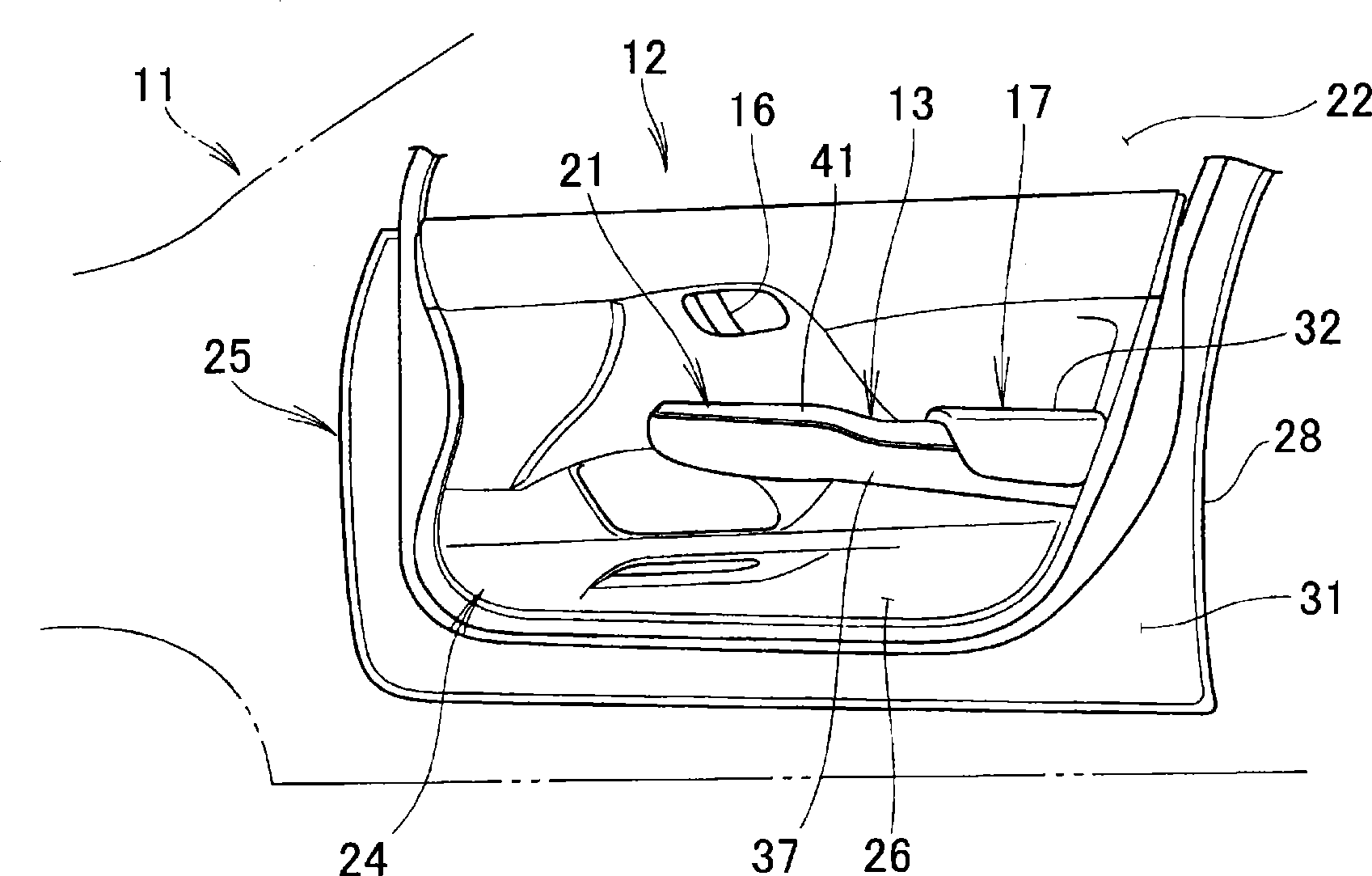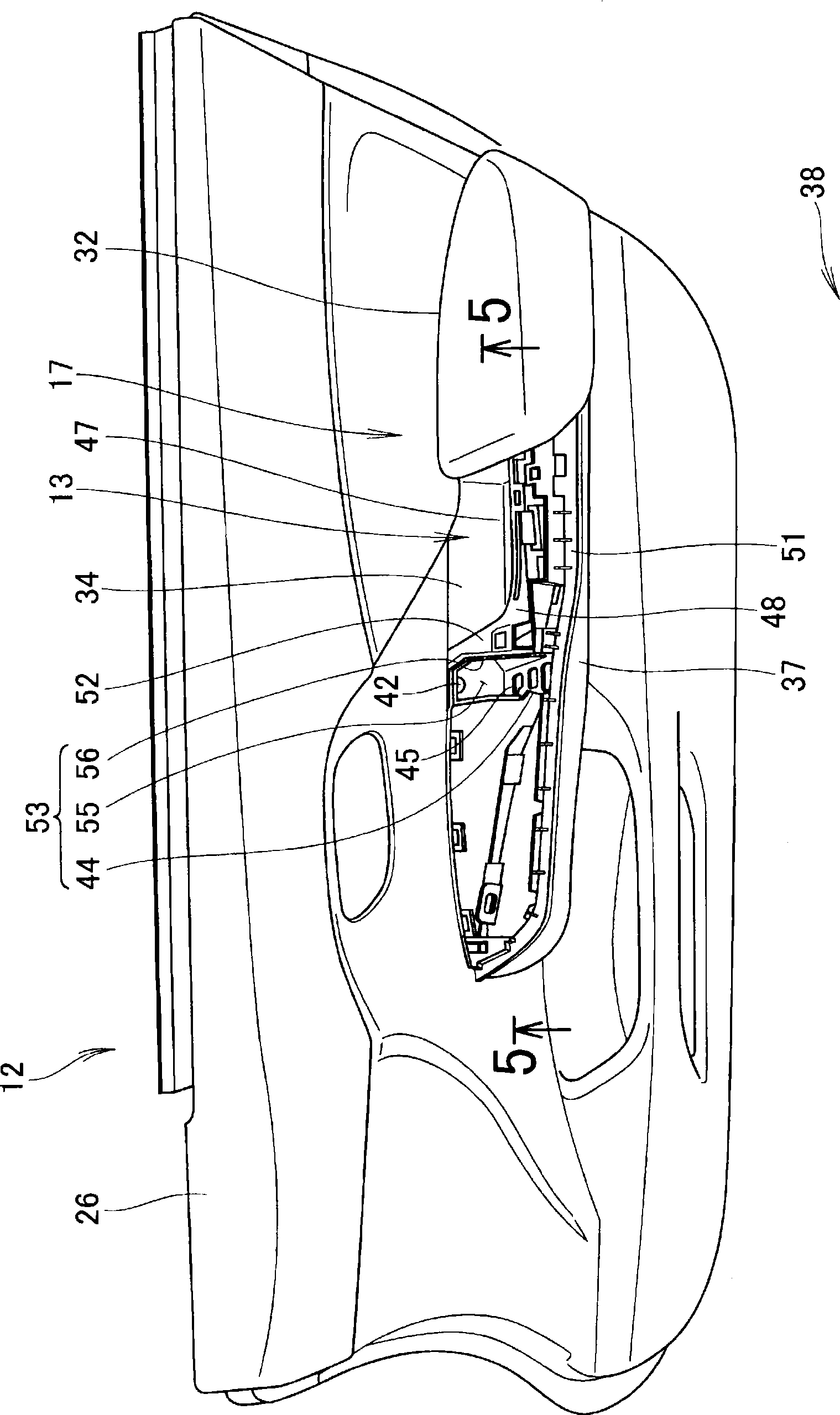Interior part for vehicle
An interior and component technology, applied in the field of vehicle interior parts, can solve the problems of threaded components falling off and time-consuming, and achieve the effects of being easy to fall and easy to hang.
- Summary
- Abstract
- Description
- Claims
- Application Information
AI Technical Summary
Problems solved by technology
Method used
Image
Examples
Embodiment
[0027] figure 1 , figure 2 and image 3 An interior component 13 provided in the vehicle body 11 is shown. The door 12 is a right front door and has a door opening handle 16 , an armrest 17 , and an operation panel 21 arranged on the armrest 17 . Buttons for opening and closing a glass 22 of the right front door 12 and a door glass of a left front door (not shown) are arranged on the operation panel 21 .
[0028] The door 12 has a storage box as an interior member 13 arranged on an armrest 17 , and a speaker arrangement portion 24 . A door trim wall 26 is attached to the door main body 25 . The door body 25 is composed of an outer panel 28 and an inner panel 31 . The door trim wall 26 , the trim component 13 and the armrest 17 are fixed on the inner panel 31 .
[0029] Such as Figure 1 to Figure 7 As shown, the armrest 17 has an armrest body portion 32 extending from the door trim wall 26 ( Figure 6 Arrow a1 direction of ), which is formed by placing the elbow. Suc...
PUM
 Login to View More
Login to View More Abstract
Description
Claims
Application Information
 Login to View More
Login to View More - R&D
- Intellectual Property
- Life Sciences
- Materials
- Tech Scout
- Unparalleled Data Quality
- Higher Quality Content
- 60% Fewer Hallucinations
Browse by: Latest US Patents, China's latest patents, Technical Efficacy Thesaurus, Application Domain, Technology Topic, Popular Technical Reports.
© 2025 PatSnap. All rights reserved.Legal|Privacy policy|Modern Slavery Act Transparency Statement|Sitemap|About US| Contact US: help@patsnap.com



